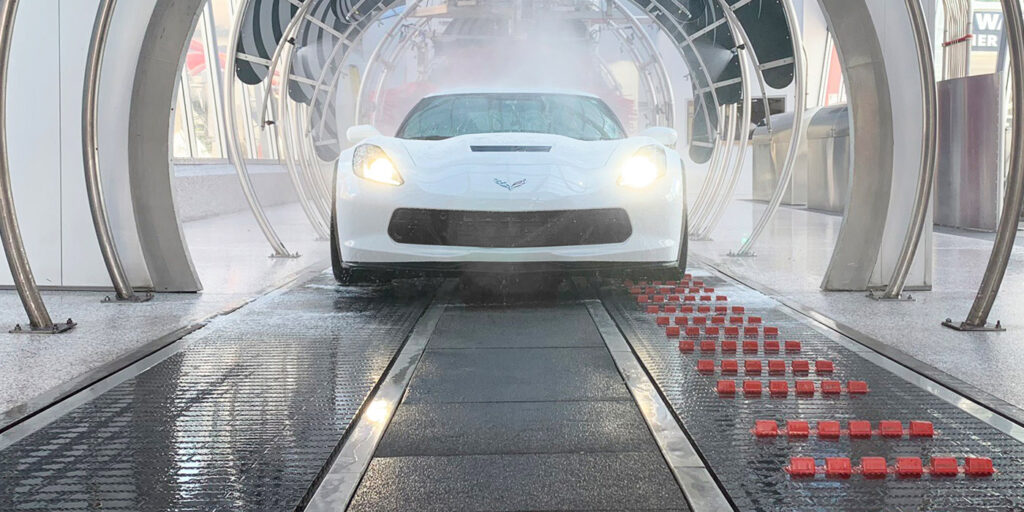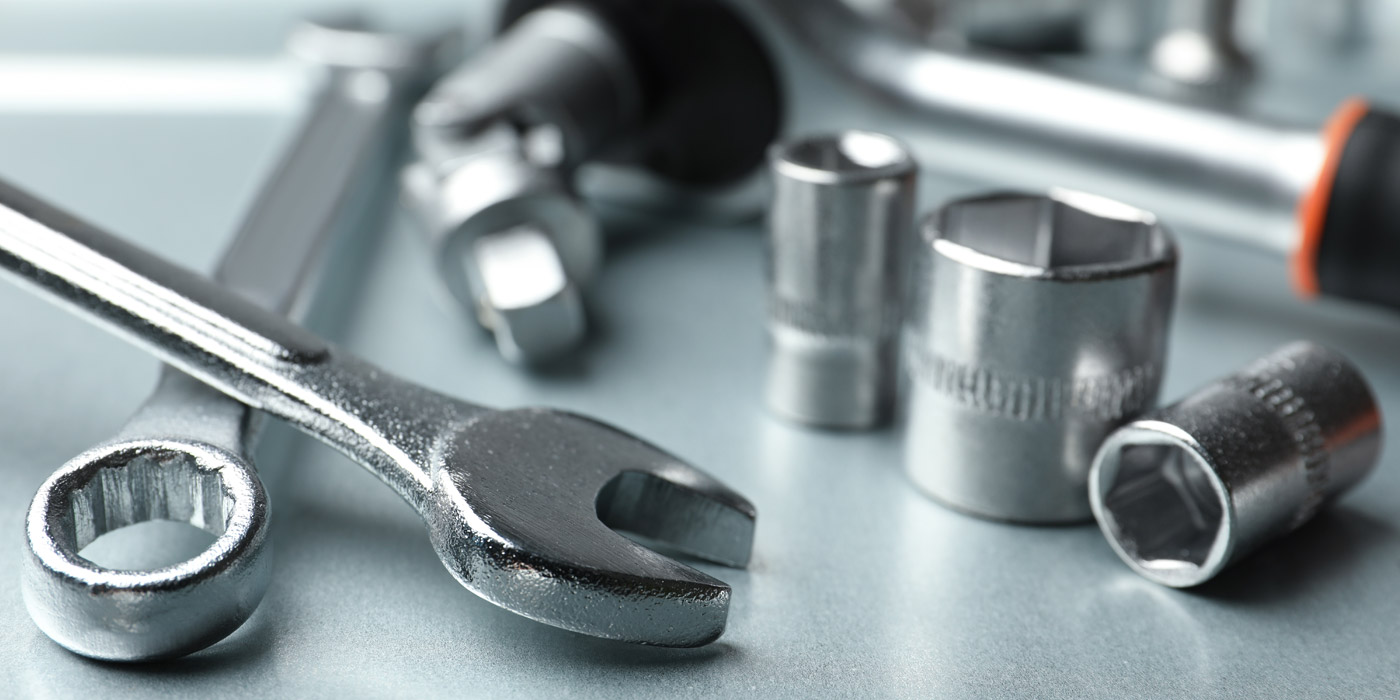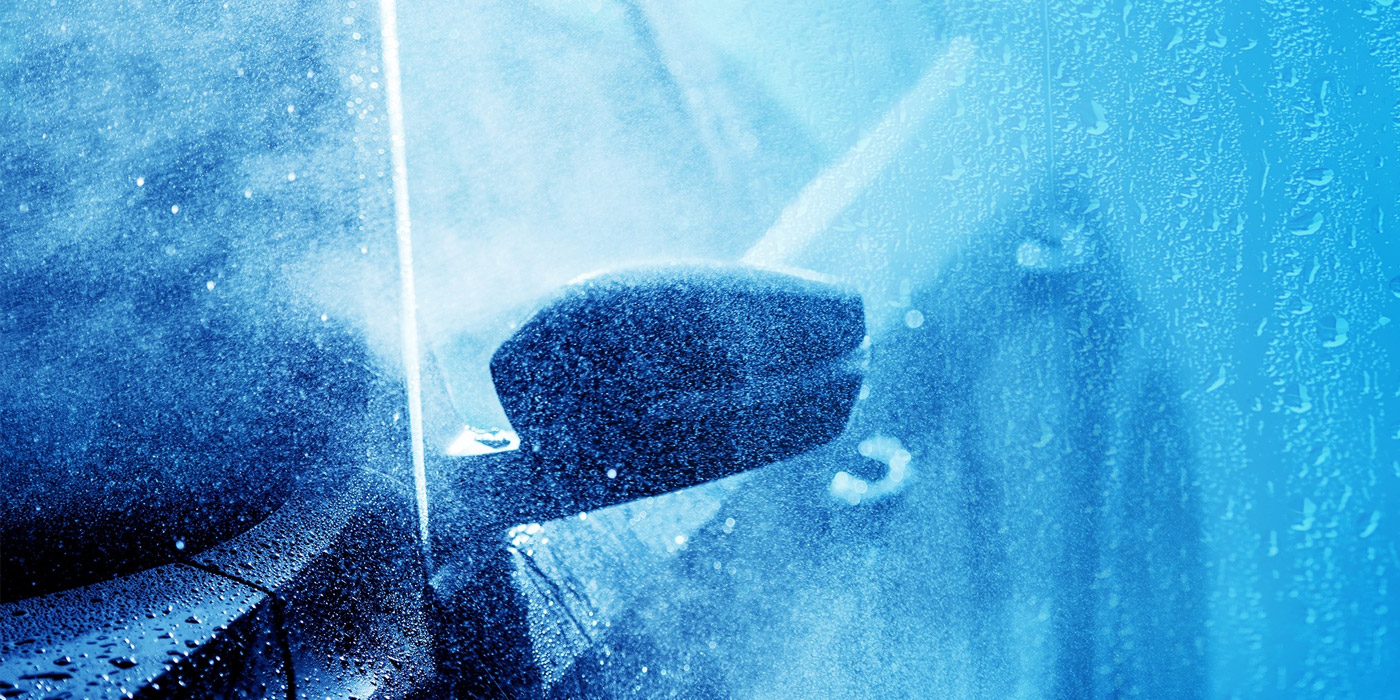For customers and those outside the industry, the amount of equipment and automation utilized in the typical tunnel wash can come as a surprise. Established operators can attest to the exponential increase of technology inside facilities since the dawn of professional carwashing. From automated pay stations to modern wash media to effective drying systems, the pace of technical advancement has been astounding.
This continued development has created across-the-board change in the car care industry. Speed is king, and wash cycle speeds have surged as daily vehicle counts have climbed. But, this process of acceleration also ushered in the expectation of new services and improved wash results. Now, both tight timing and effective operation have become important for every wash cycle performed.
To maintain pace in this hyper-competitive market, every owner must stay current on the capabilities of today’s carwash control systems. Often called the “brain” of the modern carwash, these carwash controllers connect the different phases of automated operation. Wash equipment, business systems, HR functions and more communicate and share information. Only by learning about this technology and implementing industry best practices can a carwash owner hope to ensure dependable and profitable operation.
Keep it moving
Brian Bath with Innovative Control Systems notes that the newest carwash controllers allow vehicles to be processed faster than ever before. High-volume express washes depend on functional speed and accuracy, and these important factors are generated by the best integrated controller and management systems.
The list of ways a controller keeps a carwash moving is impressive. Model controllers across the industry have very efficient abilities that allow bumper-to-bumper washing while providing precise results. Bath points out that new controllers do this by allowing different types of automation, like raising the roller, to maintain a regular flow of vehicles.
Today, car-per-hour conveyor speeds currently vary in the industry — speeds of 150 cars per hour up to even 220 cars per hour are common across the express world, Bath reveals. The large tunnel properties where operators have 20-plus vacuum spaces have really pushed up speeds and profits across the board.
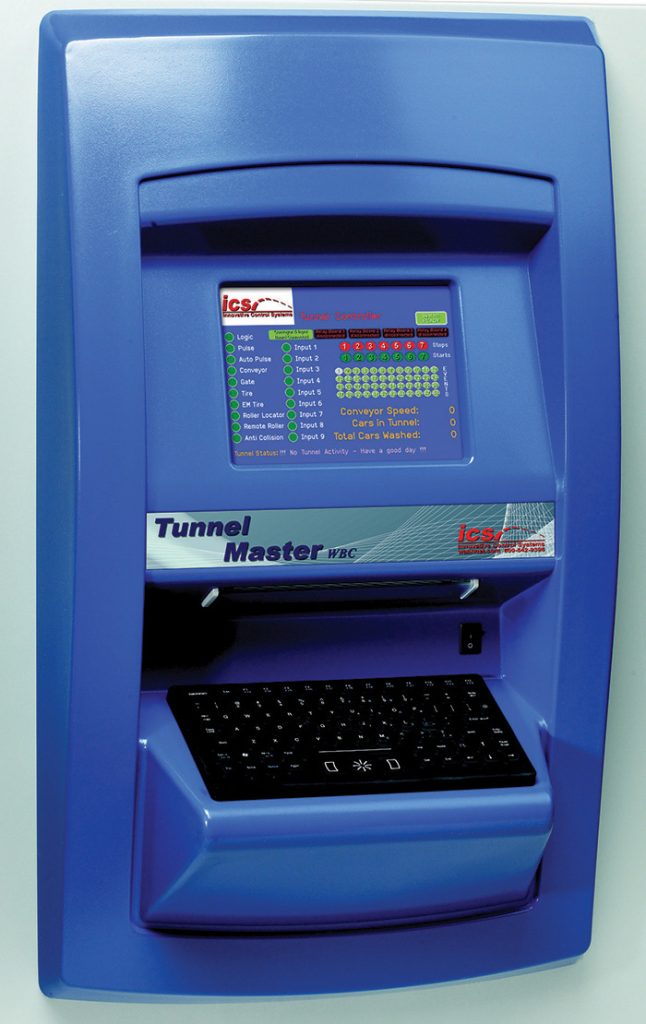
Overall, carwash tunnel controllers help operators dial in their profits and provide a clean, dry and shiny vehicle, according to Todd Davy, senior vice president of sales for DRB Systems. Other advances that modern technology allows are integration of a controller and a point-of-sale (POS) system. To this end, the controller communicates with the POS system to make sure every customer receives the wash services for which he or she paid.
Time-wasting and costly rewashes can become a problem if a vehicle receives the wrong services. Modern controllers work with other systems to address this issue. Connected cameras track a vehicle from the pay station to the tunnel, ensuring that the equipment will provide the purchased services to the correct vehicle, Davy explains. Controllers also provide safety for the consumer by controlling the conveyor and other equipment, automatically pausing the tunnel when there is a problem.
This tight control can allow for customers to receive a custom “light show” in the tunnel as well, Davy states. This feature can create a unique experience for each customer based on what was selected and purchased. Modern controllers can even activate unique signage or special lighting for any visiting unlimited wash club members.
Efficient profitability
Another advantage controllers enable is to-the-inch application of chemicals. This precise application means operators can effectively control their washes’ chemical costs. When set up correctly, equipment only sprays the vehicle, not the gap between vehicles, Davy notes. This to-the-inch application continues through the entire tunnel and applies to such services as ceramic coatings, wax applications and other necessary chemistry. This universal control not only saves on chemistry costs, but it also provides customers a better wash experience.
Energy efficiency can be another advantage. “Your tunnel controller also helps you save electricity by driving each piece of machinery in the tunnel, activating your vehicle frequency-driven devices and controlling signage and lighting around your facility,” Davy continues. “Additionally, your tunnel controller can help conserve energy by leaving your dryers on when multiple cars are in the tunnel, avoiding costly start-ups of the dryer system. Without wasting chemical or electricity, you are better able to control your per-car costs and make each service more profitable.”
Bath points to efficient look-ahead features in a carwash tunnel that can include the controller keeping the blowers running for the following vehicle. Again, this step saves energy and creates cost savings. “There are many features that can help operators save power, water, etc. When you understand all these modern-day features, your process will benefit as well as your cost savings,” Bath says.
Monitoring systems
With the ramped-up speeds and maximum loading efficiency needed, it is easy to see the importance of proper control in the world of express tunnel washing. Integrated and cooperative monitoring systems have proven to be a profit protector for many bustling car care operations. How do modern controllers enable these monitoring systems to prevent both loading issues and damage complaints in carwash tunnels?
Here, camera systems can provide on-site tracking and help avoid delays caused by a loader, which prevents slowed productivity and missed rollers. Inside the tunnel, cameras can even stop the conveyor when the vehicle is not where it is supposed to be, Davy states. Stopping the tunnel can prevent costly accidents and the downtime they create. These anti-collision systems allow a carwash to run vehicles closer together, further increasing valuable throughput and revenue on busy days.
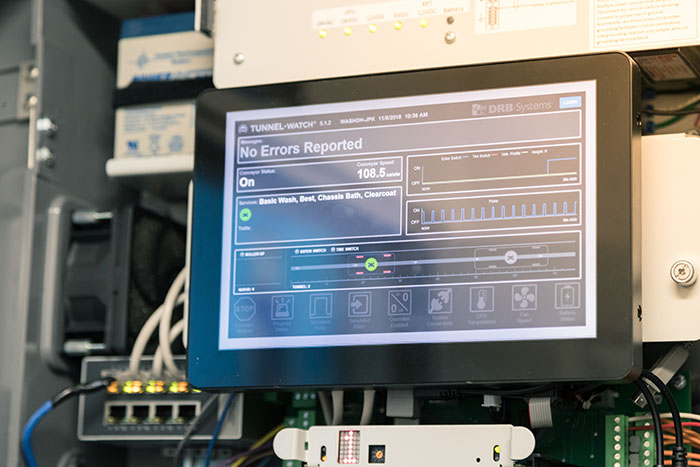
Vehicle proximity devices, such as sonar, help identify features on vehicles so a wash can provide a better clean, Davy notes. For example, these devices can detect the windshield location, allowing for special windshield wash services or side mirror rinses. It is also possible to identify truck beds, allowing a wash to automatically turn off devices. This can prevent too much soap from being dumped into the truck bed or turn off blowers so they will not blow debris out of the bed onto other vehicles.
Maintenance requirements can be monitored using the features provided by updated controller technology as well. Davy explains that modern controllers are able to help operators manage equipment maintenance cycles. The systems can track how often the tunnel devices run, allowing an operator to know when he or she needs to conduct preventative maintenance. This feature prevents equipment failure or breakage and helps a location avoid costly downtime.
Controllers and software
Modern carwash controllers offer software interfaces that allow operators to troubleshoot problems, such as timing changes, remotely through the cloud, notes Davy. Thus, even when the operator is off-site, he or she can log in, tweak settings and help the wash staff.
Max Pulcini, director of marketing and communications with EverWash Car Club, states that modern software options give carwash operators a snapshot of who their customers are and how they use the wash. For example, using software to collect usage data from customers can help an owner engage with customers who are at risk for cancellation of their memberships. Using software to communicate with customers also allows for more cross-promotional marketing opportunities that can help drive carwash customers to a detail center, service center or convenience store as well.
“Software has come a long way in the carwash industry, but perhaps the most exciting advancement we have seen recently is in license plate recognition (LPR) technology, as well as new opportunities for pay station integration,” Pulcini says.
Knowing the target customer is important when it comes to marketing at carwashes, according to Dean Lecky, vice president of sales with Micrologic Associates. Understanding customers’ buying habits through software connected to controllers allows a carwash to offer options designed to raise the average ticket price.
Lecky also recommends operators take the time to evaluate the possible integration of new technology, audit current manual steps to existing business processes and eliminate reporting on information that is not used or needed. Evaluate the current state versus future-state desires against the maturity of the current operations, and an operator’s overall ability to manage changes.
“Using the system to be proactive versus reactive can help with lost revenue due to the inability to keep up with the demand of the site,” Lecky says.
Best practices
Asked for carwash controller best practices, Davy states that operators need to use the controller’s reports to schedule an ideal preventative maintenance schedule for their tunnel equipment. Further, owners and managers should monitor any alerts or warnings that the controller provides. This includes errors with the pulse switch and the enter switch. The pulse switch can signal problems with the accuracy of the conveyor movement, and the enter switch can impact the proper measurement of vehicles.
Next, Davy recommends that carwash owners become very familiar with how their particular tunnel controllers function. Properly dialing in a tunnel helps make any business more profitable and gives wash customers and club members a better finished product — the clean, dry and shiny vehicle that every visitor expects.
“Just learn and understand your system so you get the most benefit from its abilities,” Bath concludes.
Michael Rose is a freelance contributor.






